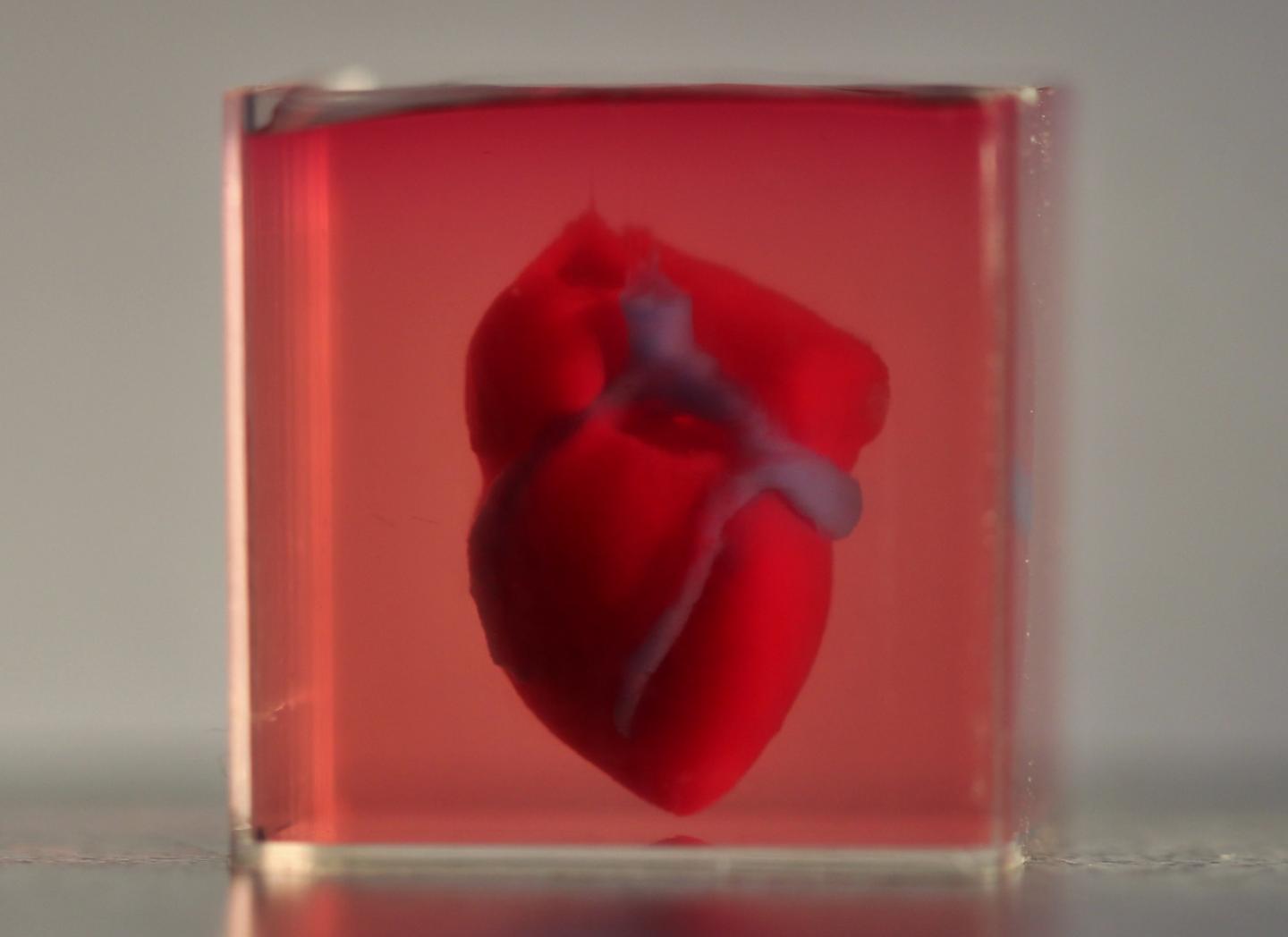
Scientists at Tel Aviv University successfully printed the world’s first 3D printed heart complete with blood vessels using a patient’s own biological materials and cells – a major breakthrough in regenerative medicine.
The findings were published in a study in Advanced Science (citation below).
Professor Tal Dvir of TAU’s School of Molecular Cell Biology and Biotechnology, who led the research for the study, said:
“This is the first time anyone anywhere has successfully engineered and printed an entire heart replete with cells, blood vessels, ventricles and chambers.”
The 3D printed heart is roughly the size of a rabbit’s, but the team says that larger human hearts would require the same technology.
“At this stage, our 3D heart is small, the size of a rabbit’s heart,” explains Prof. Dvir. “But larger human hearts require the same technology.”
The heart is made from human cells and patient-specific biological materials.
“In our process these materials serve as the bioinks, substances made of sugars and proteins that can be used for 3D printing of complex tissue models,” Prof. Dvir explained.
“People have managed to 3D-print the structure of a heart in the past, but not with cells or with blood vessels. Our results demonstrate the potential of our approach for engineering personalized tissue and organ replacement in the future.”
Prof. Dvir says it is crucial to use a patient’s own biological materials when engineering tissues and organs to eliminate the risk of implant rejection.
“The biocompatibility of engineered materials is crucial to eliminating the risk of implant rejection, which jeopardizes the success of such treatments,” Prof. Dvir says.
“Ideally, the biomaterial should possess the same biochemical, mechanical and topographical properties of the patient’s own tissues.
“Here, we can report a simple approach to 3D-printed thick, vascularized and perfusable cardiac tissues that completely match the immunological, cellular, biochemical and anatomical properties of the patient.”
The next step for the team is to culture the printed hearts in a laboratory and “teach them” to behave like hearts. They then plan to transplant the 3D-printed heart in animal models.
“We need to develop the printed heart further,” said Prof. Dvir. “The cells need to form a pumping ability; they can currently contract, but we need them to work together.”
This AFP video below shows the 3D printer in action:
Citation
, , , , , , 3D Printing of Personalized Thick and Perfusable Cardiac Patches and Hearts. Adv. Sci. 2019, 1900344. https://doi.org/10.1002/advs.201900344
